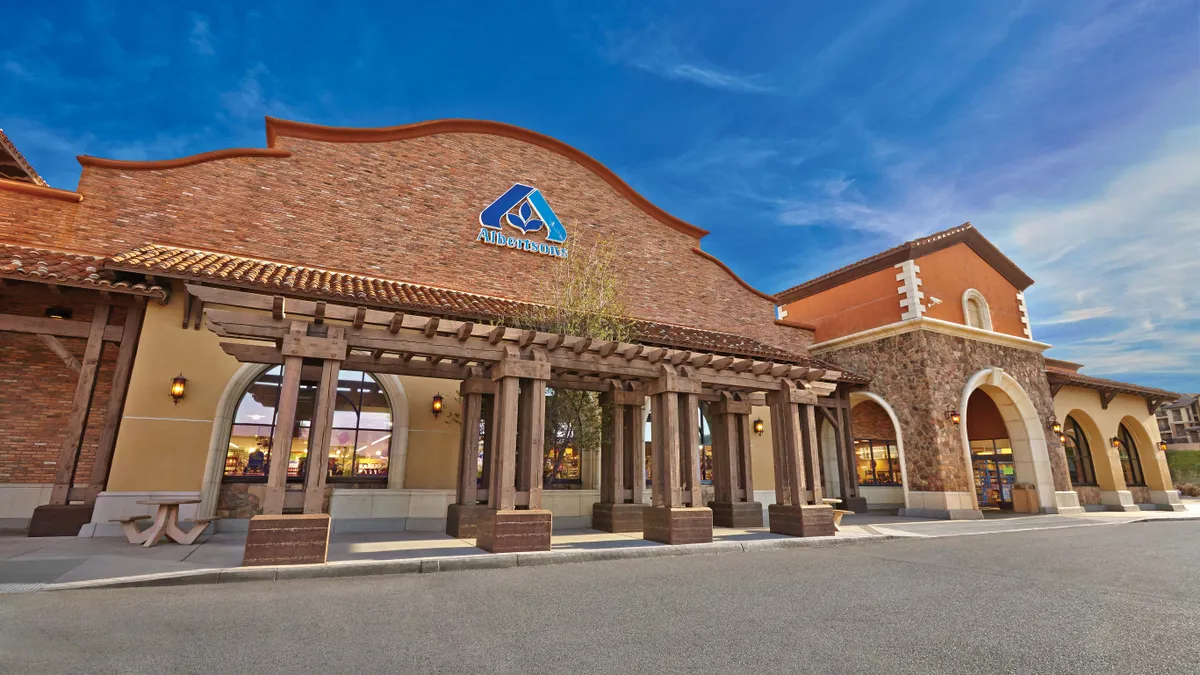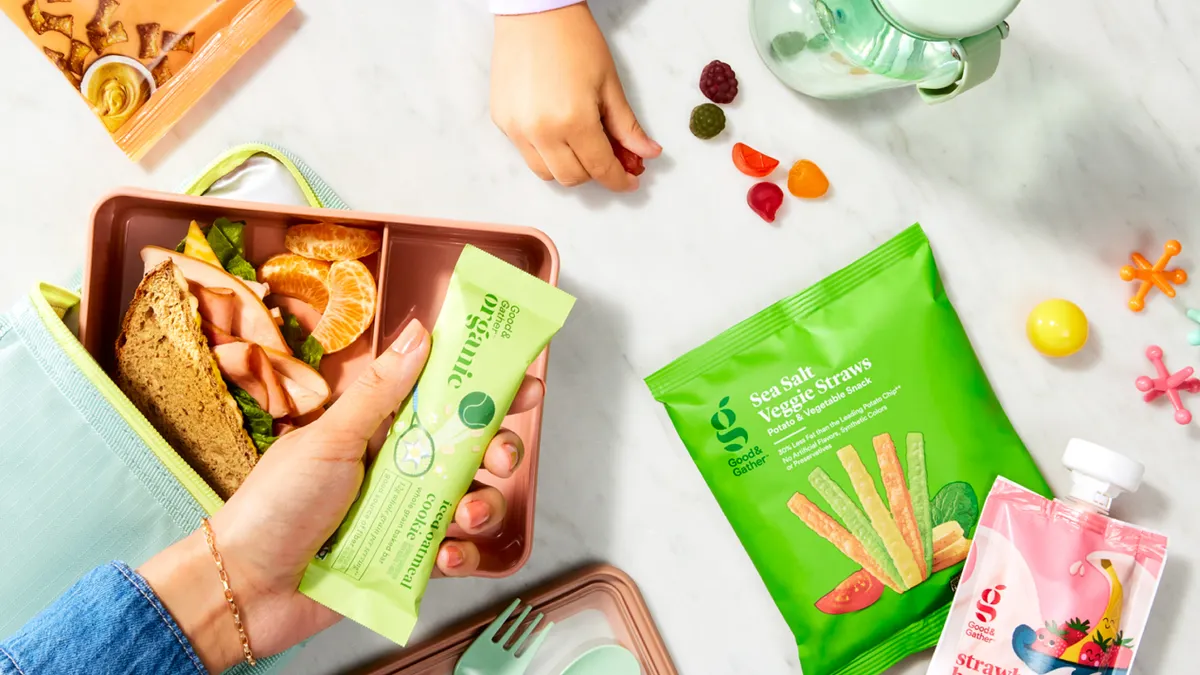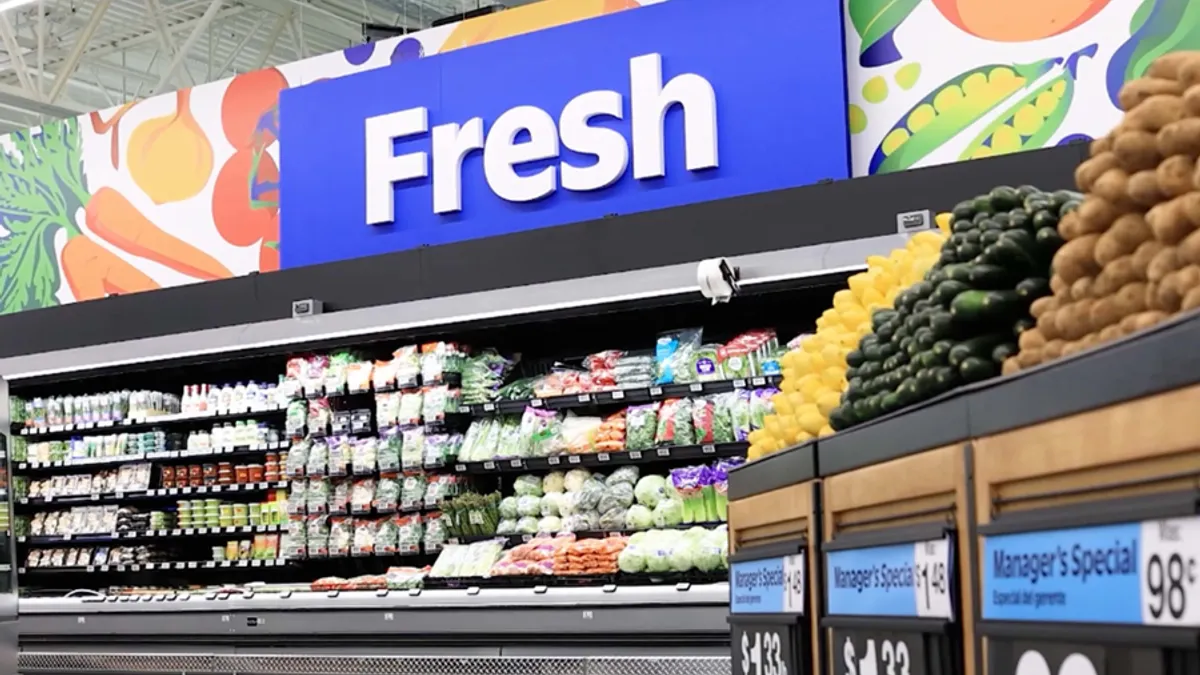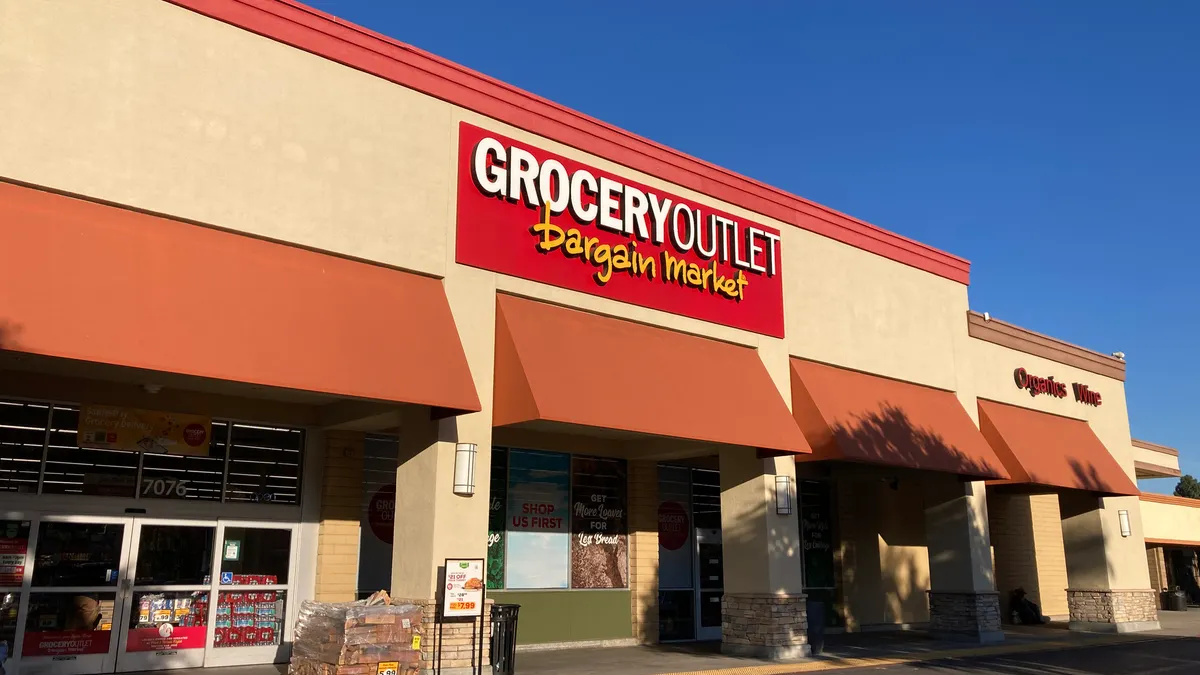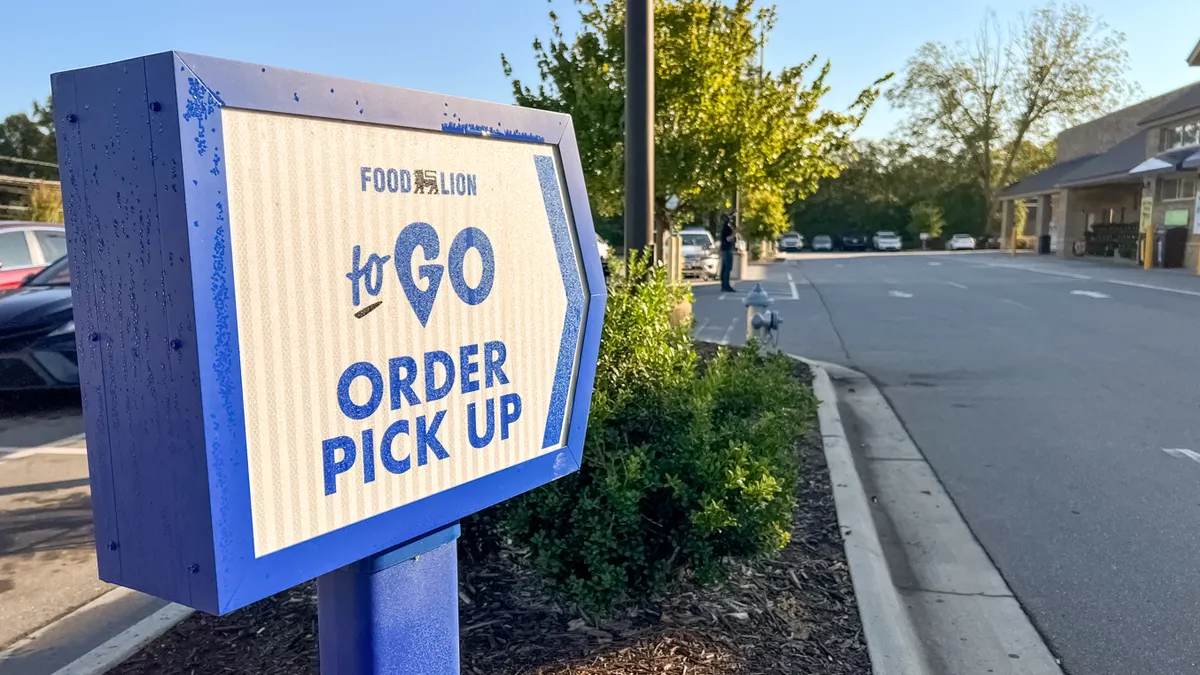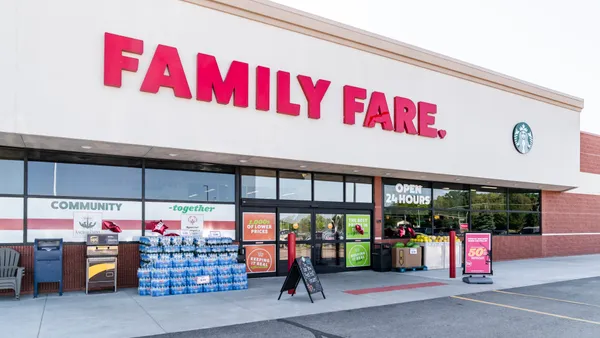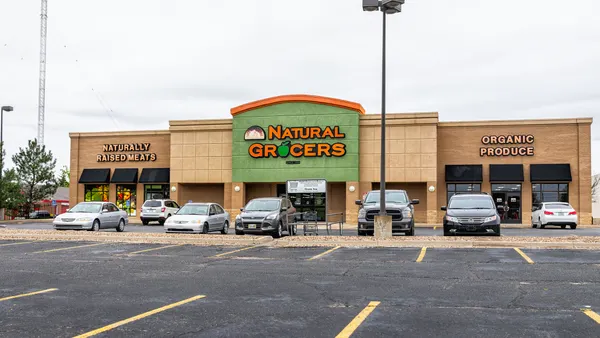The deal Kroger and Albertsons have crafted to sell hundreds of stores and several brands to C&S Wholesale Grocers raises the likelihood that the supermarket giants will ultimately win government clearance to consummate their controversial merger plan, according to stock market analysts.
In a Tuesday note to investors, Oppenheimer & Co. said it believes the chance that Kroger and Albertsons will be able to merge is now above 50% because of the divestiture plan, which the firm said “should alleviate regulatory concerns on the competitive front.”
Oppenheimer also pointed in its note to Kroger’s recent financial performance and headwinds like moderating grocery inflation as key obstacles for the company as it looks to strengthen its position in the grocery industry.
But while the proposed divestiture deal announced earlier this month would to an extent alleviate concerns that the retailers would have an unacceptable level of market power if they were to combine, there remains a significant chance that the Federal Trade Commission will nevertheless decide to oppose Kroger and Albertsons efforts to combine, said Arun Sundaram, vice president of CFRA Research.
“We think it’s still more likely than not the FTC moves to challenge the merger, which would mean that it would go to court,” Sundaram said, noting that Kroger CEO Rodney McMullen said earlier this year that the company is prepared for a legal fight if regulators move to oppose the deal.
“It seems the package was constructed with the mindset of getting the blessing from the FTC, so they could get past the whole market concentration, market overlap hurdle, but there could be other issues that the FTC brings,” Sundaram added.
Those potential issues could include worries by regulators that Kroger and Albertsons could still be able to get better terms from suppliers than competing grocers despite slimming down, Sundaram said. In addition, regulators could claim that the merger would reduce competition for workers, a condition known as labor monopsony, he said, although he noted that C&S has said it intends to honor labor agreements it would inherit.
“We don’t know what the FTC will bring, [but] it seems like they might try to find other ways to challenge this deal, not just [over] market concentration or market overlap,” Sundaram said.
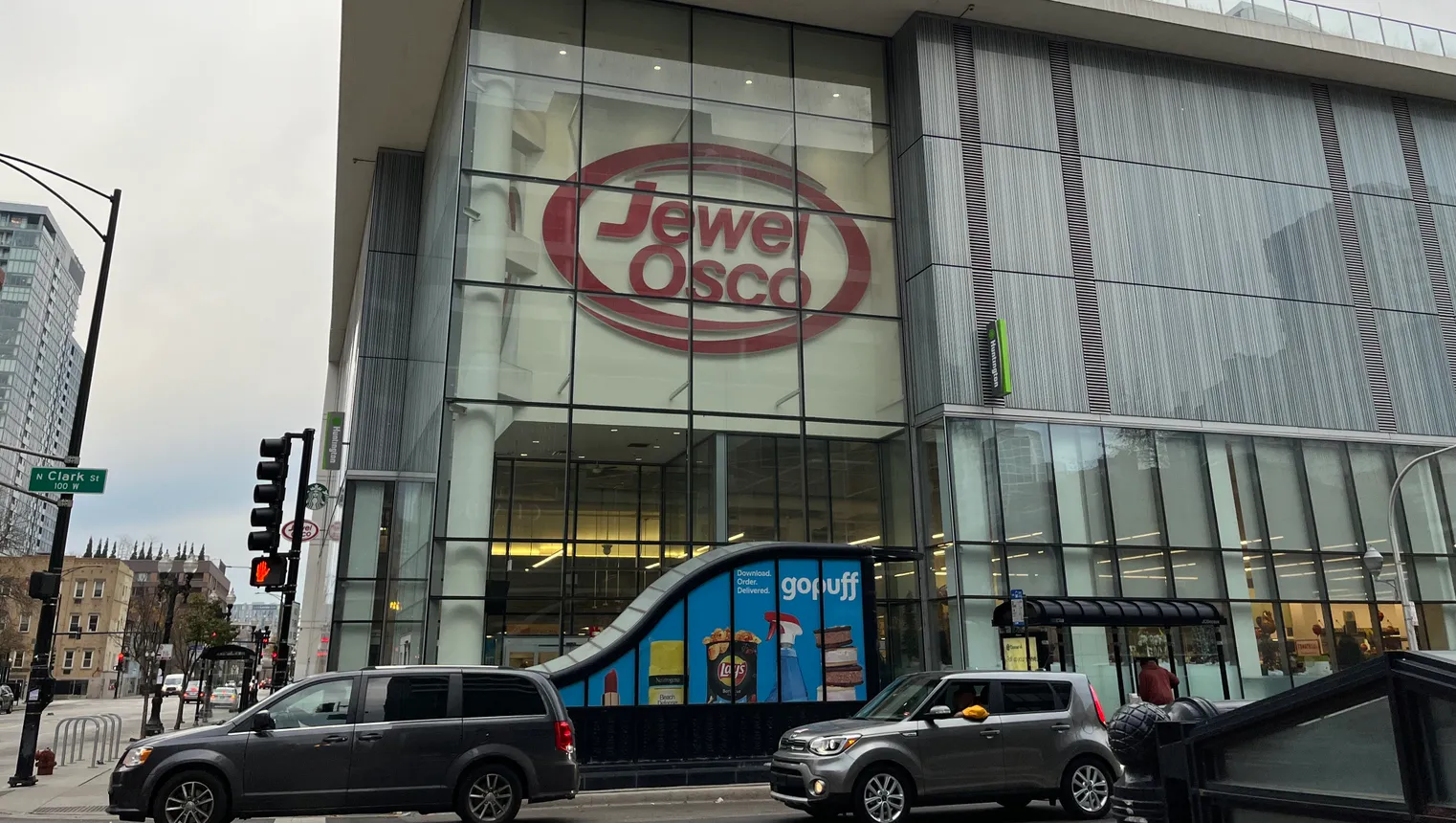
Even with the possibility of a court challenge looming, however, Sundaram said he believes Kroger and Albertsons now have a 50-50 chance of being able to prevail in their effort to merge, up from the 40% figure he was baking into his assessment of the deal before the arrangement with C&S was announced.
Sundaram also said the $1.9 billion C&S has agreed to pay for the 413 supermarkets and other assets Kroger and Albertsons are looking to sell suggests that the companies may have selected stores with weaker sales to unload, which he said could also invite concern.
The deal with C&S calls for it to take control of the QFC, Carrs and Mariano’s banners, as well as some stores carrying the Albertsons and Harris Teeter banners. C&S would also gain the right to use the Albertsons brand on supermarkets in Arizona, California, Colorado and Wyoming.
“I think there is some question about the profitability of these divested stores. There could be questions raised about how viable are some of these stores, because they do seem to be generally underperforming stores compared to the rest of the company,” Sundaram said.
While he said he thinks C&S is in a strong position to invest in the stores it would acquire from Kroger and Albertsons, Sundaram said signs that those locations are less profitable could raise red flags for regulators.
“It could mean the FTC could have questions about the long-term viability of some of these stores, but then again, the major offset to that argument is the fact that C&S grocers has capital to invest” in them, said Sundaram.
Critics of the divestiture plan, including union officials, have drawn parallels with the ill-fated sale of some Safeway stores in 2015 to Haggen in connection with the review by regulators of the Safeway-Albertsons merger. Haggen fell into bankruptcy after acquiring the stores and wound up selling them back to Albertsons.
Speaking during an earnings call last Friday, Kroger CFO Gary Millerchip indicated the company is confident in C&S’ ability to compete robustly in the grocery industry after it takes control of the stores it has agreed to buy.
“I would just say that from our perspective, we got very comfortable with their financing strategy and feel they both have the financial strength to be able to complete the transaction but also the financial strength to be able to keep investing in the business going forward,” Millerchip said.



